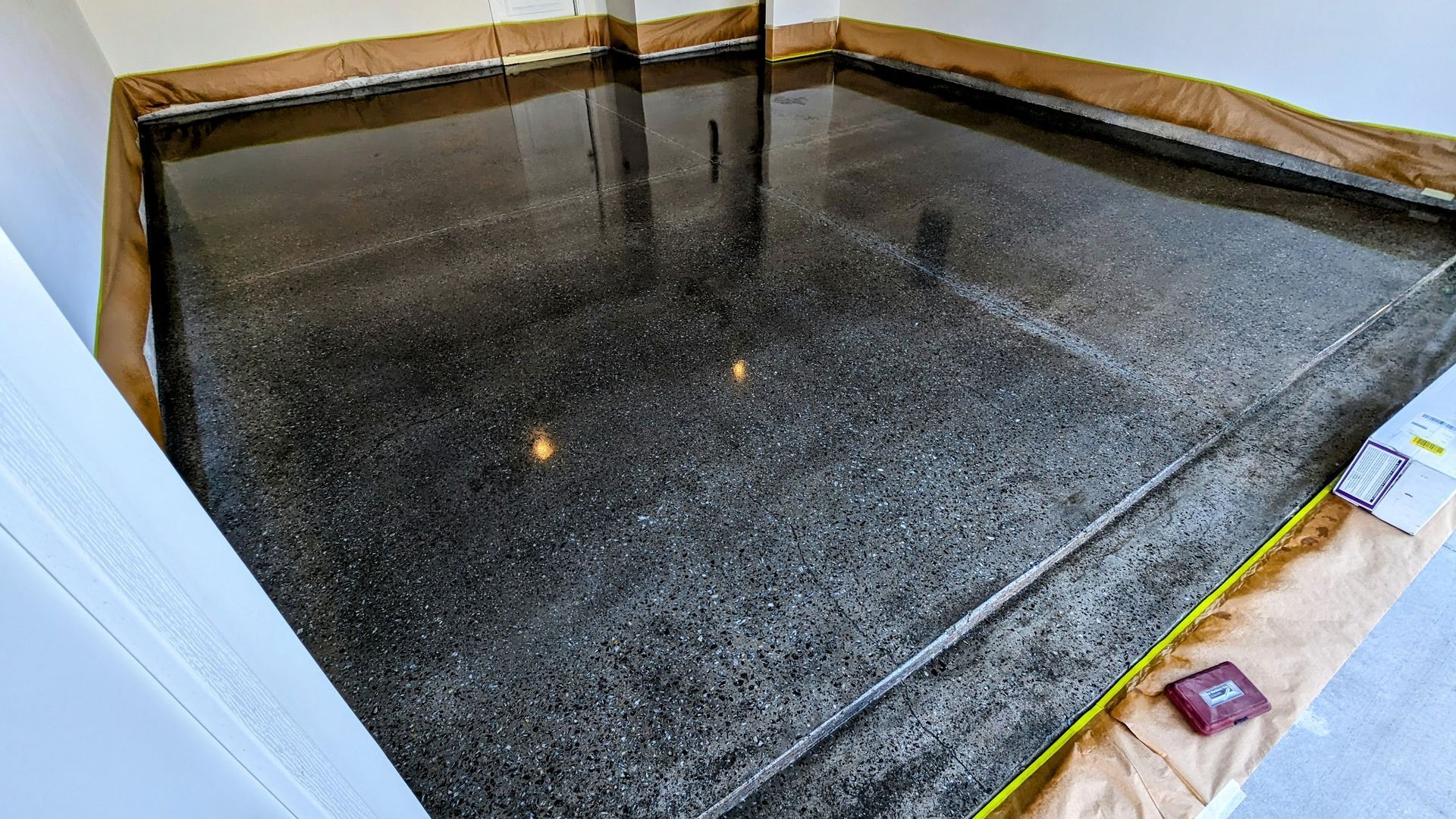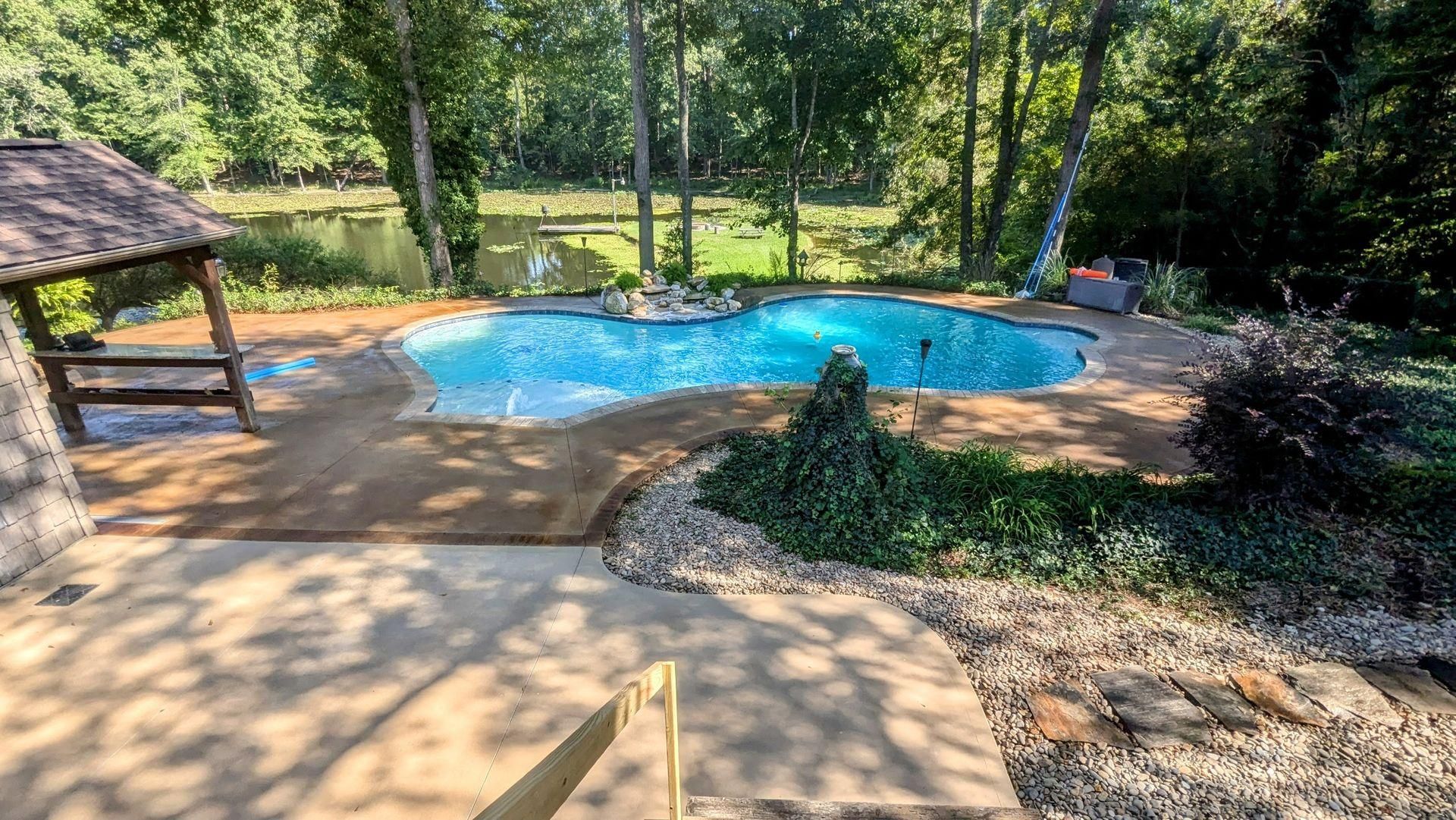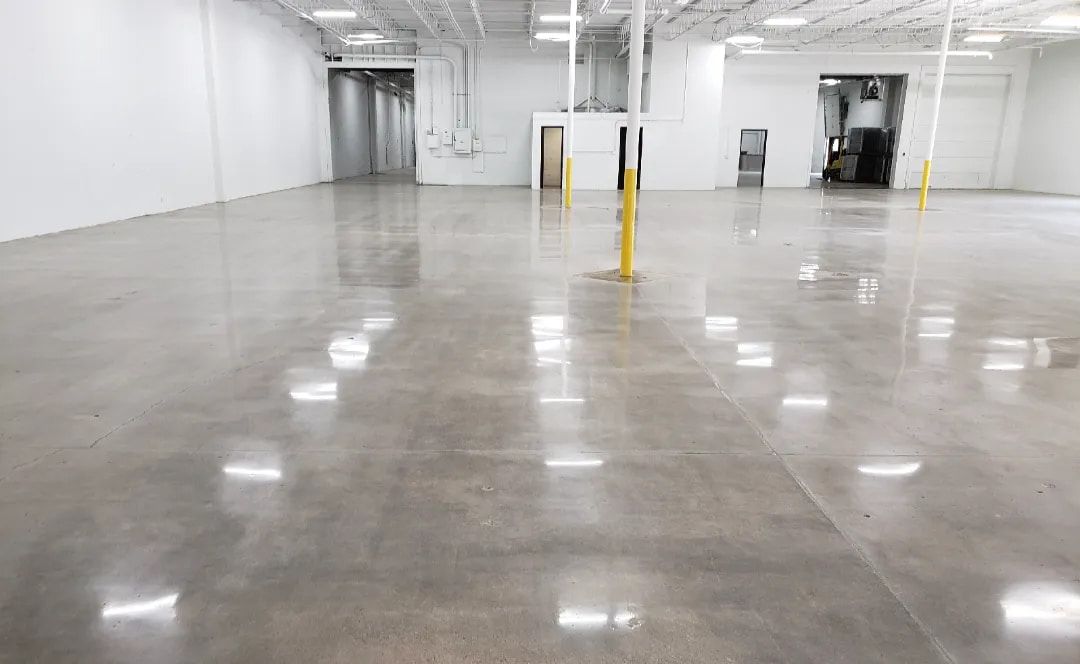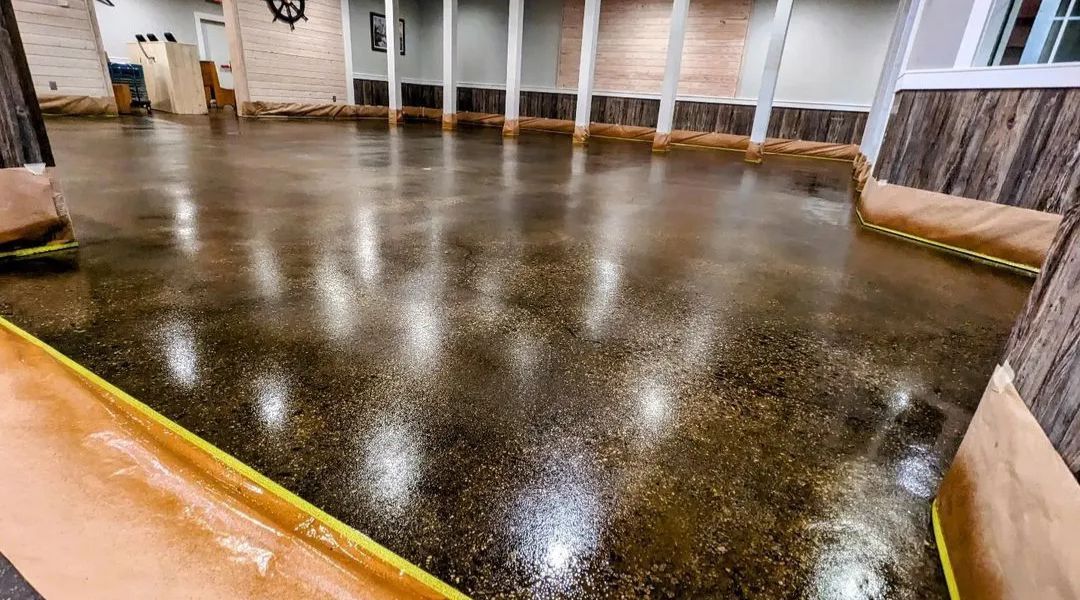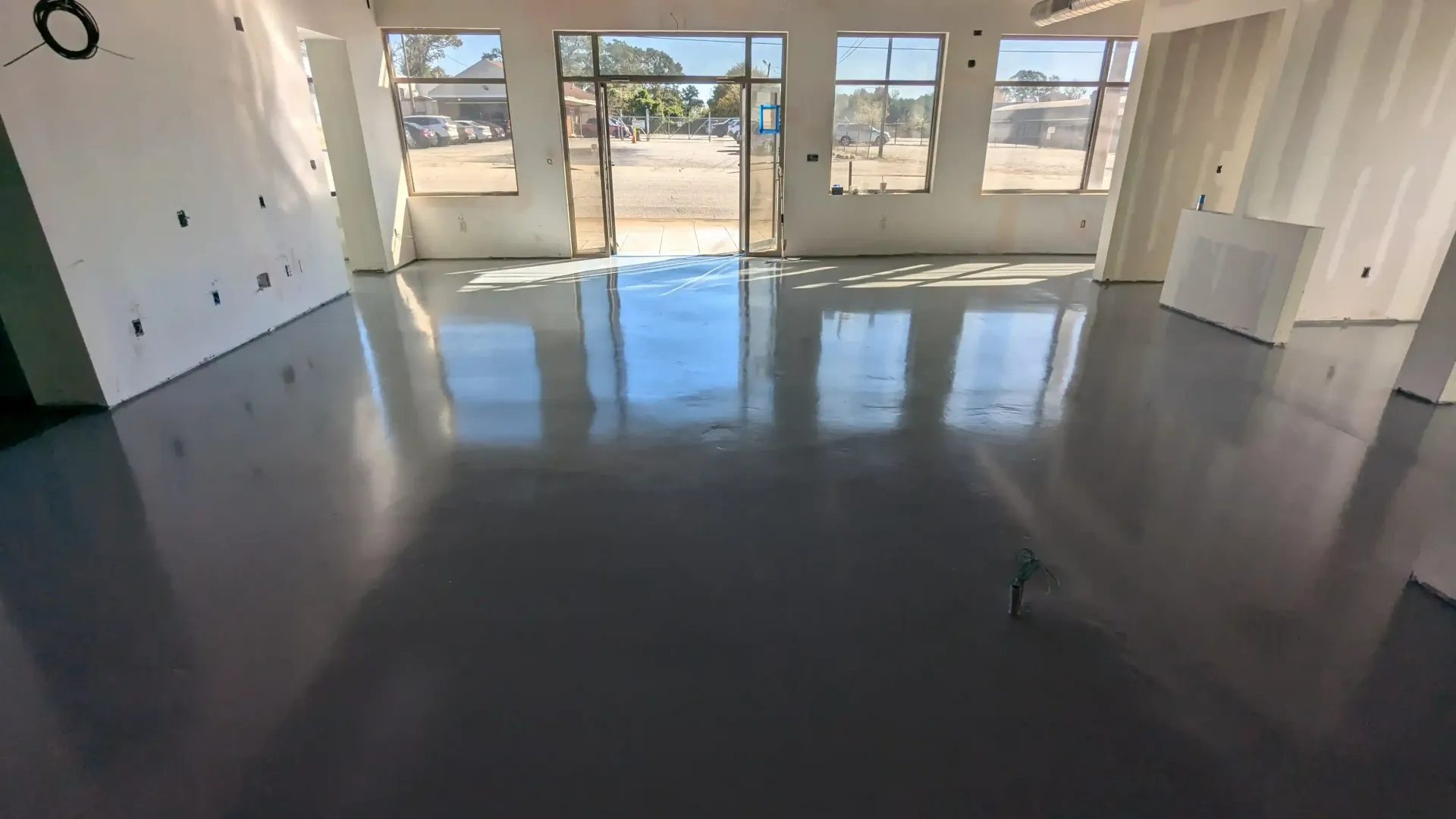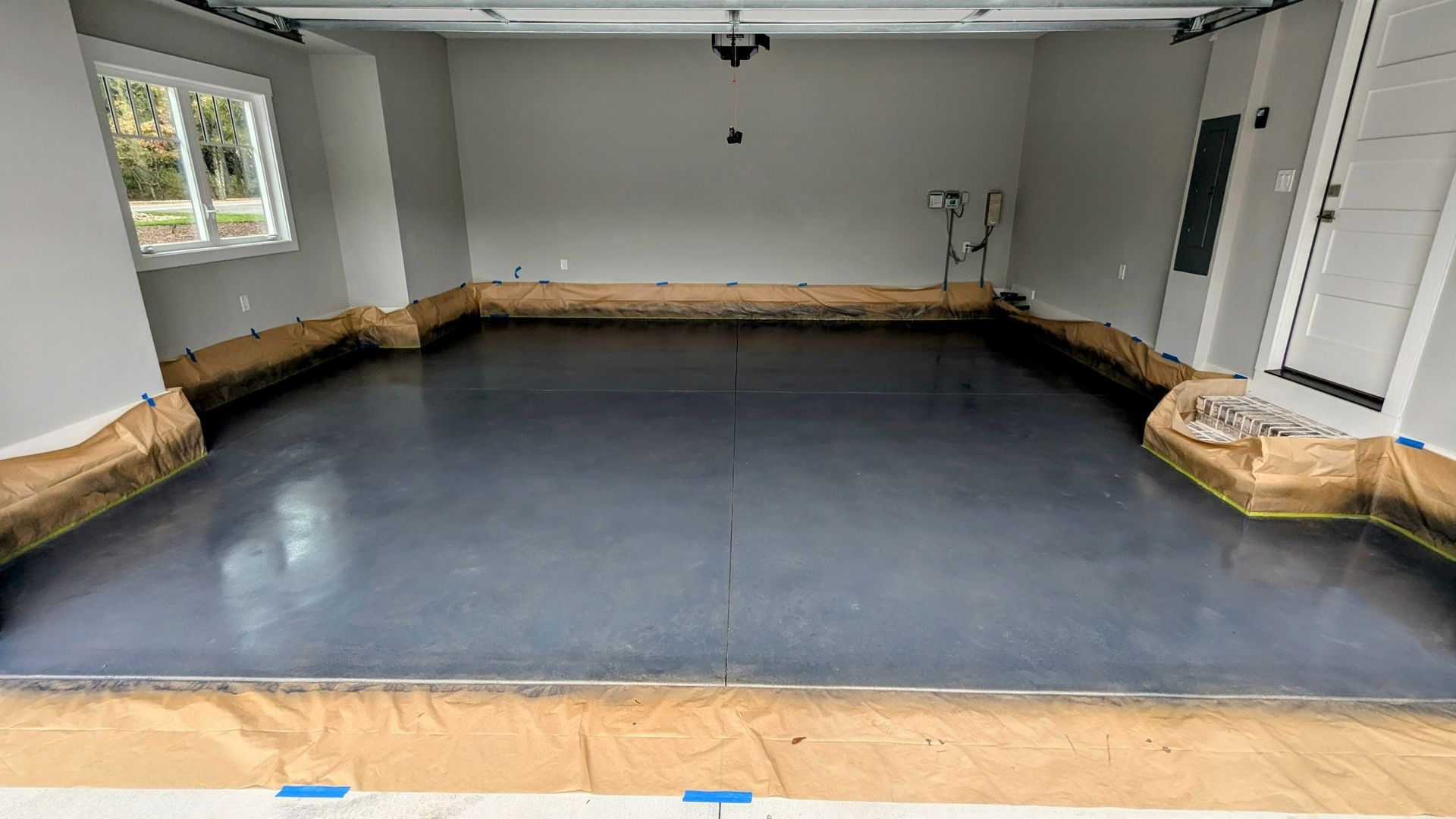Weather-Resistant Landscape Finishes for Concrete
If your patio looks like it lost a fight with the weather, you’re not alone. Sun, rain, and freeze-thaw cycles wreck unprotected concrete fast. A report from the American Concrete Institute confirms that exposure to the elements is one of the top causes of early surface failure in outdoor concrete.
You spend time and money on your outdoor space. It shouldn’t chip, crack, or fade within a year.
This article is for homeowners, contractors, and property managers who want concrete that actually lasts outdoors. We’ll break down the top weather-resistant finishes for concrete landscaping—what they do, where they work best, and how to make sure your investment stays solid through every season.
Let’s protect that concrete before the weather ruins it.

Why Outdoor Concrete Needs Protection
Concrete may look tough, but untreated concrete is porous.
That means:
- Water gets in
- UV rays break it down
- Temperature swings cause cracks
Over time, the surface erodes. Color fades. Weeds sneak in through cracks. You start thinking about ripping it all out.
Weather-resistant finishes protect against all of that. They’re not just about looks—they’re about keeping your concrete patio, walkway, or driveway functional and safe.
Top Weather-Resistant Finishes for Concrete Landscapes
Let’s break down what actually works outside. These are the finishes that pros rely on when durability matters.
1. Sealed Concrete (with Penetrating Sealers)
If you want long-term protection with a natural look, this is the go-to.
How it works:
Penetrating sealers sink below the surface. They block out moisture while allowing the concrete to breathe.
Best for:
- Pool decks
- Patios
- Driveways
Weather benefits:
- Water beads off
- Salt won’t eat the surface
- Prevents freeze-thaw damage
Tip: Choose silane/siloxane blends for deep protection in rainy or coastal areas.
2. Stamped Concrete with High-Performance Sealer
Stamped concrete looks like stone or brick but needs protection to stay that way.
Why sealing matters:
UV rays fade the color fast. Moisture weakens the pattern edges.
Best for:
- Walkways
- Entry paths
- Decorative patios
Weather benefits:
- UV-blocking sealers keep the color sharp
- Slip-resistant additives make it safer when wet
Tip: Reapply sealer every 2–3 years for best performance in sunny or wet climates.
3. Exposed Aggregate with Epoxy Seal
Exposed aggregate is decorative and durable, but not immune to weather.
What helps:
Epoxy-based sealers give it a glossy, hardened shell.
Best for:
- Driveways
- Garden paths
- Outdoor stairs
Weather benefits:
- Protects against rain and sun
- Keeps dirt and debris from getting lodged between stones
- Long-lasting and low-maintenance
Note: Avoid epoxy finishes if the area has standing water issues—go breathable instead.
4. Broom Finish with Water Repellent Sealer
This is the most functional surface—and with the right finish, it handles weather like a champ.
What helps:
It’s simple, safe, and has natural grip, even when wet.
Best for:
- Sloped driveways
- Sidewalks
- Utility walkways
Weather benefits:
- Less slippery in rain
- Doesn’t trap water
- Good surface for snow melt
You can still seal it without making it look glossy or slippery.
5. Stained Concrete with UV-Resistant Sealer
What helps:
UV-stable sealers designed for exterior use.
Best for:
- Outdoor entertaining areas
- Firepit patios
- Decorative garden spaces
Weather benefits:
- Less slippery in rain
- Doesn’t trap water
- Good surface for snow melt
You can still seal it without making it look glossy or slippery.
Outdoor concrete stains can fade in months without the right finish.
Other Weather Factors to Consider
1. Freeze-Thaw Cycles:
Water expands when frozen. If it’s inside your concrete, expect cracking. Use breathable sealers that don’t trap moisture underneath.
2. Salt from Deicing:
Salt eats away at unprotected surfaces. Use salt-resistant finishes if your winters are icy.
3. Heat Exposure:
Hot climates fade finishes fast. Look for UV-stable sealers and lighter surface colors to reflect sunlight.
4. Humidity:
In wet or coastal regions, mold and algae are the real threat. Anti-microbial additives or regular reapplication can help.
Maintenance Tips to Keep It Weather-Ready
Even the best finish needs a little upkeep. Here’s what to do:
- Sweep regularly to prevent dirt buildup and staining
- Re-seal based on the product’s life span (usually every 2–3 years)
- Avoid harsh chemicals that strip sealers
- Rinse off salt during winter to avoid surface damage
- Watch for peeling or discoloration—signs your sealer is wearing out
You don’t need to baby it—but don’t ignore it either. A little attention goes a long way.
Common Mistakes to Avoid
- Skipping the sealer
- Using indoor finishes outside
- Applying sealer on damp concrete
- Not following reapplication timelines
A good contractor won’t cut these corners. Always ask for outdoor-grade products and finishes designed for your specific weather conditions.
Conclusion
Your outdoor concrete shouldn’t fall apart after one bad storm. With the right weather-resistant finishes, you can protect your landscape surfaces from the damage that sun, rain, snow, and heat throw at them.
From sealed broom finishes to UV-resistant stains, the right choice depends on your space and your climate—but skipping the finish is never worth it.
For lasting results and a polished look that holds up to the elements,
Zachary Daniel Concrete offers expert concrete finishing solutions that actually work outside. Don’t let weather take its toll—get in touch with us today and protect your investment the right way.
